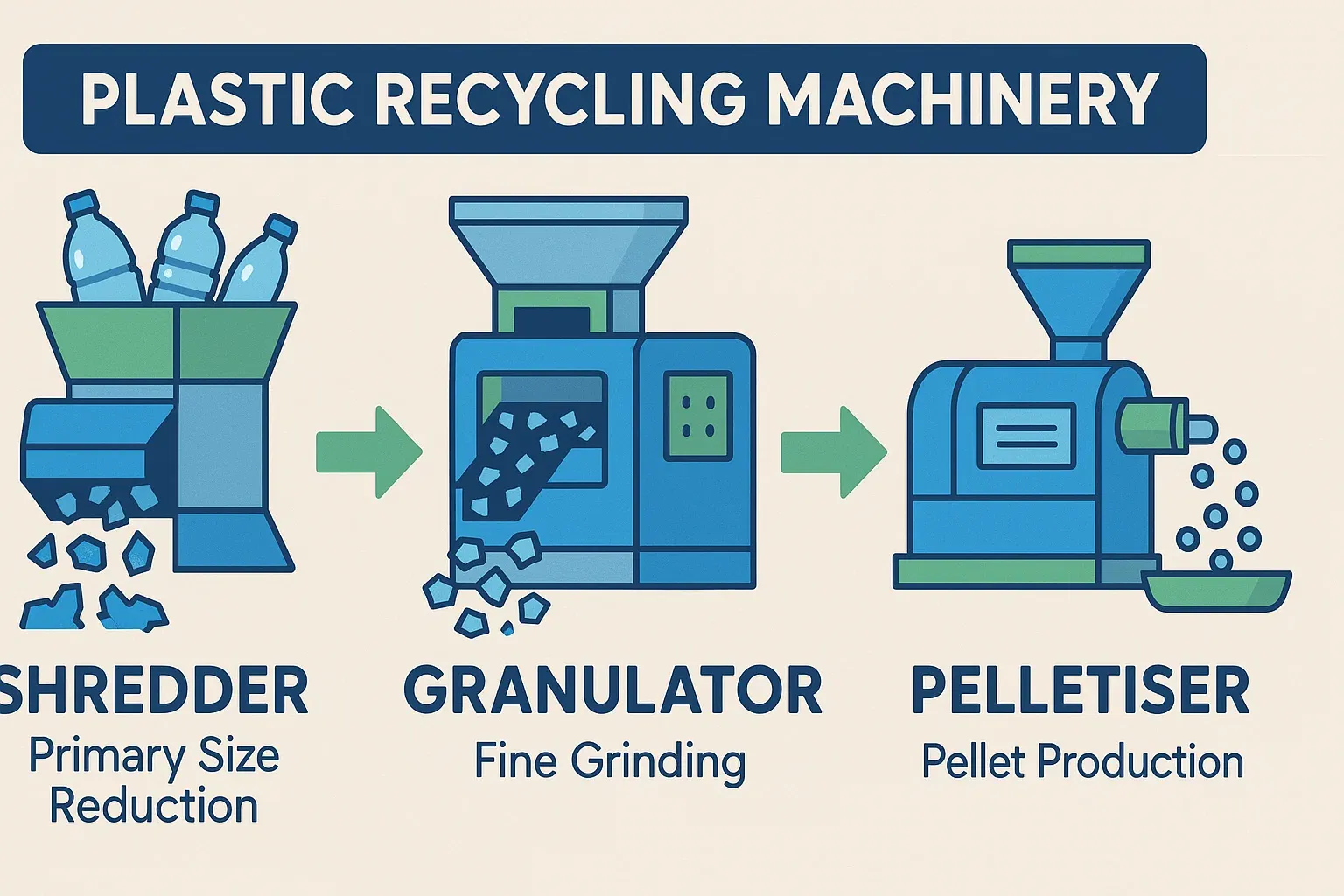Granulators vs. Shredders vs. Pelletisers: Understanding the Differences and Synergies
In the realm of plastics recycling, granulators, shredders, and pelletisers are three common yet functionally distinct pieces of equipment. Clearly understanding their differences and interconnections is crucial for optimising recycling processes.
Shredder
A shredder is primarily used for the initial size reduction of large, bulky, or mixed plastic waste. It typically employs tearing, shearing, or impact methods to produce larger, irregular-sized pieces. Shredders often serve as pre-processing equipment for granulators, especially when dealing with materials that are too voluminous or difficult to feed directly into a granulator’s hopper. The main goal is to reduce material volume for easier subsequent handling, with less emphasis on the uniformity of the final particle.
Granulator
A granulator, as the name suggests, uses high-speed rotating blades to finely cut and break down plastics, producing smaller, relatively uniform particles or flakes (often called regrind). This regrind can be directly reused in manufacturing or serve as feedstock for a pelletiser.
Pelletiser
A pelletiser is typically positioned at the end of the recycling line. It takes cleaned and crushed (possibly granulated) plastic, melts it, and extrudes it through a die head into strands. These strands are then cut by a pelletising unit (e.g., water-ring, air-cooled, underwater) into uniform, marketable plastic pellets. These pellets have consistent shape, size, and bulk density, making them easier to store, transport, and use in subsequent plastic moulding processes.
Synergies in Recycling Lines
These three types of equipment can work synergistically in a recycling line. A typical process might involve: large waste items first entering a shredder for coarse shredding, then being conveyed to a granulator for fine grinding. The resulting regrind, after washing and drying, is then fed into a pelletiser to be melted, extruded, and cut into final plastic pellets. Some integrated systems even combine shredding, feeding, and extrusion (pelletising) functions in a single step.
The optimal recycling line configuration (e.g., Shredder → Granulator → Pelletiser vs. Granulator → Pelletiser) is highly dependent on the form and volume of the input material, as well as the specifications required for the final product. There is no single “best” sequence. The choice of equipment and its order is a strategic decision based on material characteristics and processing goals, crucial for engineers designing recycling lines.
Consequences of Misunderstanding Equipment Roles
Confusing the distinct roles of shredders, granulators, and pelletisers can lead to inefficient processing, increased energy consumption, and lower quality of recycled materials, ultimately impacting the return on investment. For example, using a granulator to process very large or tough materials more suited for a shredder will result in excessive wear on blades and screens, frequent blockages, and motor overload. Similarly, expecting granulated regrind to possess the same physical properties as pelletised granules is unrealistic. Clearly differentiating the functions of this equipment helps purchasers make informed investment decisions and enables engineers to design efficient recycling systems.



